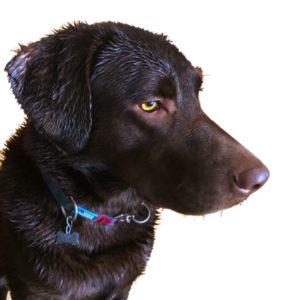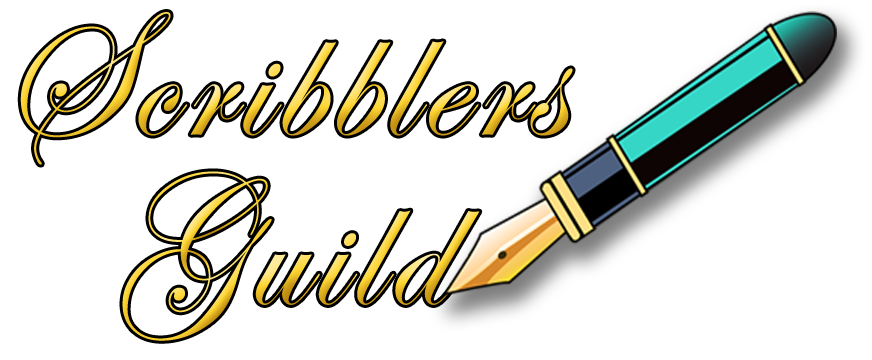The Joy of Structure

When we first begin writing our memoirs, more often than not, it’s dull. Boring. A recitation of the facts of our life. Devoid of emotion. A bland telling of the stuff that happened without any of the emotional involvement that makes a story great. Meh!
And that’s totally okay.
First drafts are supposed to be a dull recitation of plot, without all the bells and whistles that make a story come alive for the reader. First drafts are meant to get the ideas out of your head and down on paper or screen so you can do something with them. It’s only as we revise and revise and revise again, that the story begins to take shape, gain momentum, and find its own sense of self. It’s in the writing and the rewriting that it finds its rhythm, its focus, and most importantly, the point it’s trying to make.
All too often, we look at the first draft and think we’re finished, but that’s simply not true. It can always be improved. Just like any other artistic discipline, writing requires constant repetition to get it right. A dancer practices her routine over and over before she performs it. An actor learns his lines, blocking and character before he goes on stage. A painter creates an underpainting and builds on it layer by layer until it’s finished.
And so does a writer.
We start with a basic outline comprising the fundamental elements of good stories. A story, even a personal history, needs a beginning, a middle, and an ending. It needs characters with goals. It needs conflict. It needs transformation and resolution. A first draft can give you the vague beginnings of all those elements, but until you’ve worked with it, edited and polished it over and over, it’s nowhere near done.
So, how do you edit? What do you look for when you go back to your rough first draft and turn it from something destined for the circular file into something worth publishing, or at least sharing with others?
 As I say, you need a structure. Where so many writers become confused is trying to decide which structures work for memoirs and autobiographies. There are loads of formal story structures out there — the Snowflake Method, The Grid System, The Hero’s Journey, The Freytag Pyramid, the Three-Act Structure, and so on, and on, and on…
As I say, you need a structure. Where so many writers become confused is trying to decide which structures work for memoirs and autobiographies. There are loads of formal story structures out there — the Snowflake Method, The Grid System, The Hero’s Journey, The Freytag Pyramid, the Three-Act Structure, and so on, and on, and on…
Much of it depends on your own writing style, whether you’re instinctively a plotter — one who likes to outline first, or a pantser — one who likes to write by the seat of your pants. Most people start out as pantsers, because that’s the fun part — writing to see where the story will take you. But without some kind of framework on which to hang your story, most pantsers end up going off on tangents, down rabbit holes and ultimately writing themselves into a corner, with the result that they have to re-write endlessly and end up throwing out enormous quantities of writing that they could have avoided if they’d started with a basic outline first. Or at least some idea of the concept they want to get across.
Outlines don’t have to be carved in stone. Just as on a road trip, they’re a map that shows you how to get to your ultimate destination, but there’s no rule that says you can’t take side trips and explore intriguing locations on the way. Similarly, a writer, if she knows roughly where she’s headed, can afford to take a bit of time to explore some of the stops along the way.
 Start With A Meaningful Idea
Start With A Meaningful Idea
So, even if you’re allergic to outlining, start out your memoir with some idea of what each incident means to the story. What’s the overall message, theme or universal truth that could tie them together? Which of your experiences fit into that concept? And, equally importantly, which ones don’t? When you write a memoir around a theme, it doesn’t much matter if the events themselves are all very different. What ties them together is the underlying significance — to you. What each incident meant — to you. And therefore, to your reader.
Figure out the significance of each event in your memoir, relative to the story’s overall theme or message. If you can do this, you’ll have the beginning of a strong framework on which to build your story. All the formal outlines in the world won’t help you if your story doesn’t mean something to the reader. For it to mean something to the reader, it has to mean something to you, the writer. Your job is to convey that meaning in a way that the reader can experience for himself.
Let me give you an example:
One of the memoirs I’m considering is a book about what my many dogs over the years have taught me. Naturally, I will need to talk about the dogs, but the underlying theme — lessons about life, love and the pursuit of happiness is what shapes each story. The book isn’t about what happened, or the many humorous incidents, although they’ll figure into the individual anecdotes. The book is about how I’ve changed as a result of what I’ve learned.

Draft Version: The first draft sets out what happened, but not how it felt or why it mattered. It has a beginning, a middle and an end. It has characters with goals; it has conflict; but it doesn’t really have transformation. It has resolution but it’s not particularly significant or memorable. And it’s all telling, not showing: this happened, then that happened:
I took Hunter to the dog park last week. It was one of the first snowstorms of the year and I didn’t want to be there. The dog had a great time playing in the snow, but I was miserable, cold, wet and scared. We didn’t stay long, even though he wanted to stay and sniff every bush and fence. It was nice to get back to the warm car.
This first draft just gives me enough information to recall the incident. It doesn’t include any emotion, sensory impressions, or personal thoughts and feelings. It doesn’t convey the significance of this event or why it was important enough for me to include in the memoir. But when I go back to edit it, I can fill in the meaning and relevance of the event as it relates to my overall story — how my relationships with my various dogs have taught me invaluable life lessons and made me a better person.
Final Version: Though I may go back through for another pass, after about ten revisions, this is mostly done: for structure, for grammar, for spelling, for word choices, sentence length and pacing, for active voice, for sensory enhancement, for emotional enhancement, for deep point of view.
In this version, the story is told from inside my head, experiencing the sights, sounds and sensory impressions I lived through at the time. I’m showing the reader what I experienced, not just telling him about it. Immersive writing draws a mental picture for your reader, as if they’re watching a movie.

Lord, the things we do for our dogs…
What was I thinking? This morning, the weather report had announced we should expect some lake effect weather, but when Hunter and I set out for the dog park, I sure hadn’t counted on a virtual whiteout of wet, sleety snow blowing sideways, stinging my face like buckshot and soaking through several layers of utterly inadequate clothing.
Resentfully, I blinked the snow out of my eyes as I watched my mad chocolate Lab racing around the perimeter of the enclosure, yipping and barking in delight as he challenged me to chase him, playing keep-away with a well-chewed stick he’d found buried beneath the snow. No matter the weather, Hunter always rejoiced in his daily dose of leash-free adventure, but I swear, if the damn dog was planning to head for the far end of the park to do his business again today, it could bloody well stay there. There’s no way I was going to go all the way down to the far end to pick it up like a good little dog-mum. Let it freeze. I’d pick it up in the spring!
They ought to give me a medal, I thought. My long-johns were soaked right through under my jeans, my jacket had pretty much given up the battle almost before we arrived, and I could no longer feel my knees. I shivered and pulled my hood closer around my face, once again reminding myself to do some remedial sewing or stick a safety pin in it or something, anything to prevent the stupid thing from falling over my eyes and blinding me. Sleet dimpled the standing water on the bench where I sat. Even my butt was frozen.
I wrestled my coat sleeve far enough back to see my watch and calculated we’d stay for maybe another ten minutes, giving Hunter time enough to grow bored with a dog park that contained not a single other dog.
As I squinted past the fenced area across the town park towards the lake, I saw no-one. Not a solitary soul. Even my dog-walking partner Jill had had the sense to stay home today with Hunter’s wrestling buddy, Arthur. Hundreds of acres, empty of everything but trees, water and snow. No-one else was brave enough or stupid enough to come out in this weather. Only me. And Hunter. Hunter the Hellhound. Hunter the clown. Hunter, the maniac mad-dog.
The first tendrils of fear sent shivers up my spine. I was the only person in the whole of the park, maybe the world. What if I fell and broke a hip? Had a heart attack or stroke? Nobody would find me until the storm was over. Or next spring. Maybe never, if Hunter got hungry enough. The park roads weren’t cleared, and it was a hefty trek back to the parking lot.
This was nuts. What on earth did I think I was doing? Finally, I’d had enough. Hauling my frozen carcass to my feet, I yelled, “Time to go, boy,” only then remembering that I’d neglected his recall training. He gazed at me, thought about it for a moment, then ignored me, dropping his nose to follow a fascinating scent towards the far end of the fence. Stupid mutt! I took off my glove so I could search in my pocket for a liver treat, his favourite. Naturally, it dropped in a slushy mud-puddle as I struggled to pull the wet glove over my numb fingers, and I had to start all over again. Sometimes, I hate my dog.
After several minutes of calling, swearing and bribery, I managed to get a leash on him and we left the dog park to trudge several hundred yards through heavy snow and struggle up the hill to the parking lot. Once ensconced in the van, I turned the heat on high and rained down blessings on whoever invented car heaters.
As I turned to look at my dog in the back seat, he grinned back at me, wagging his tail. He leaned forward to give my ice-cold face a lick, and in that perfect moment, I knew Hunter appreciated the sacrifice. I vowed no matter the discomfort, I’d go through it all again, because it made him so happy.
Then the little bugger shook, inundating the interior of the van with muddy water.
Lord almighty, the things we do for our dogs!
Beverley Hanna
Trained as an artist in the late 1960’s and early 1970’s, I was one of the first creatives to be employed in the computer graphics industry in Toronto during the early 1980’s. For several years, I exhibited my animal portraiture in Canada and the U.S. but when my parents needed care, I began writing as a way to stay close to them. I’ve been writing ever since. I run a highly successful local writer’s circle, teaching the craft and techniques of good writing. Many of my students have gone on to publish works of their own. I create courses aimed at seniors who wish to write memoirs, with a focus on the psychology of creatives and the alleviation of procrastination and writer's block.
